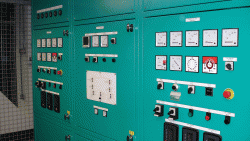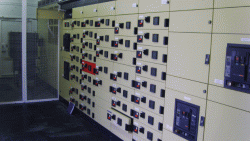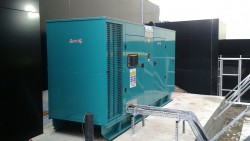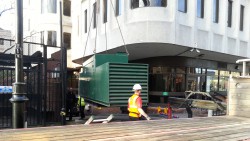Back-up generator for new first class retail and office development in London
The Customer
UK’s leading independent building services company.
The Site
Eastern end of Oxford Street, known as the ‘poor relation’ to the West End of London.
This new 90,700 sq. ft. first class retail and office development, with 47,100 sq. ft. of flagship retail units will form part of the regeneration and transformation of the east end of Oxford Street. 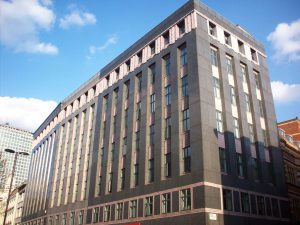 With Crossrail due to complete in 2018 and the new Tottenham Court Road tube station re-opening in 2016 it will create one of the busiest transport hubs in Europe.
With Crossrail due to complete in 2018 and the new Tottenham Court Road tube station re-opening in 2016 it will create one of the busiest transport hubs in Europe.
Our customer is helping to regenerate the building stock and upgrade the local environment and will provide almost 700,000 sq. ft. of modern space over the next four years.
This project involved the replacement of a tired art-deco façade building, on a prominent corner location at the junction of Oxford Street and Dean Street, with a new modern stainless steel/glass building but still respecting the character of the neighbouring buildings in the Soho Conservation Area.
To accommodate the new office entrance on Dean Street, which retained the original terracotta façade, they had to lift the retained facade by 900mm, a task which was a first for this type of building.
See how they did it – click here
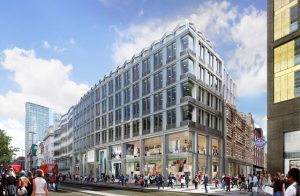 The Project
The Project
Due to various assignments previously carried out successfully for the customer, The Generator Company were awarded the project to supply, install and commission a 1 off 650kVA STANDBY rated Volvo TAD1642GE powered generator to support the entire site in the event of a mains power failure and to support the life-safety system within the new building including fire alarms, elevators and sprinkler system. We were also required to install a PLC system for the tenant’s back-up power.
On receiving the contact from the client, a dedicated Project Manager was appointed to the project to ensure that both the customer, and the project, was given 100% focus throughout. This guaranteed that the customer had someone on hand whenever they were needed.
Before any works were started, our project manager attended various on-site meetings with the customer and the end client to work out and finalise the work schedule for the project to enable us to meet the tight deadlines and tight site constraints that were in place.
After four months of meetings, site visits and survey’s the project was ready to begin in early 2016 for the planned completion date of autumn 2017.
Prior to the generator installation, the exhaust system and exhaust flue, which travelled through the building and along the roof under the building maintenance unit, was installed ready for the delivery of the generator to the plant room on the first floor mezzanine. The bulk fuel tank was craned over the building into basement level 2 via a site crane and positioned into place.
On the required weekend in the generator was lifted, in sections, over the building and in through the roof at level one via the site crane, offloaded and rebuilt in the generator room by our project engineers.
On completion of testing, a temporary resistive loadbank was used to load-test the generator to ensure that it met with the tight site restrictions that were in place.
Final testing of the system included an integrated system test to bring the generator into service with the completed LV system, fire alarm, lifts, cooling and sprinkler systems. A black building test was carried out, resulting in the electrical power to the entire building being shut off to simulate a total power failure allowing us to test the functionality of the generator and ancillary equipment, both of which was successful.
On completion of the successful installation and integration of the new generator system to provide full power to the building, and with a very happy end client, we spent a day training the client’s supervisors and other staff on how to use the system and individual equipment as well as leaving them with system operating manuals and generator technical manuals.
